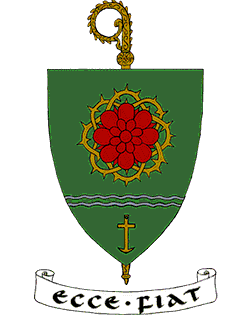Both our Benedictine tradition in general and our heritage as part of the Congregation of Solesmes contribute to a great appreciation of this form of sacred music which is Gregorian chant.
The Church acknowledges Gregorian chant as especially suited to the Roman Liturgy: therefore, other things being equal, it should be given pride of place in liturgical services.
Numerous are the testimonies that could be invoked in praise of this music. Pope Saint Pius X, in his Motu Proprio of 1903, referred to Gregorian chant as “the supreme model of Church Music.” One of the most celebrated composers of modern times, Olivier Messiaen, said the following:
Music can adapt itself to what is sacred in different ways. There is first liturgical music. This follows the structure of the Office strictly. It finds its true meaning only in the context of the Office. Viewed from this perspective, there is only one kind of liturgical Music: Gregorian chant. (International Colloquium of Musicology, Louvain, 1980)
Almost from the beginning, the monks of Solesmes (France) set themselves to the work of restoring Gregorian chant to its original purity, after many centuries of decline. In order to accomplish this they searched through all the great libraries of Europe and collated an impressive number of manuscripts or copies in their own monastic library. Dom André Mocquereau, O.S.B., along with others, conceived of what has justly been called the “Solesmes Method” of chant. As choirmaster of the abbey and being a research scholar of rare talent, he was able to devote his whole life to this undertaking. Following in his footsteps, Dom Joseph Gajard, O.S.B. and his successors were able to bring the choir of Solesmes to a level of perfection that has been greatly admired throughout the world even until our day.
At Clear Creek, inheriting the same musical tradition from Solesmes through our mother house of Fontgombault Abbey, we continue to apply ourselves to this sublime art form that so enhances the Sacred Liturgy and our monastic existence.
This Gregorian chant is an art which is both divine and human—divine because of its supernatural inspiration and that sweet and lovely odor of sanctity which breathes in all its melodies; and, at the same time, profoundly human by its musical structure and in the response it finds in simple, upright souls eager for the truth. (Dom Joseph Gajard, The Solesmes Method, 1951).



